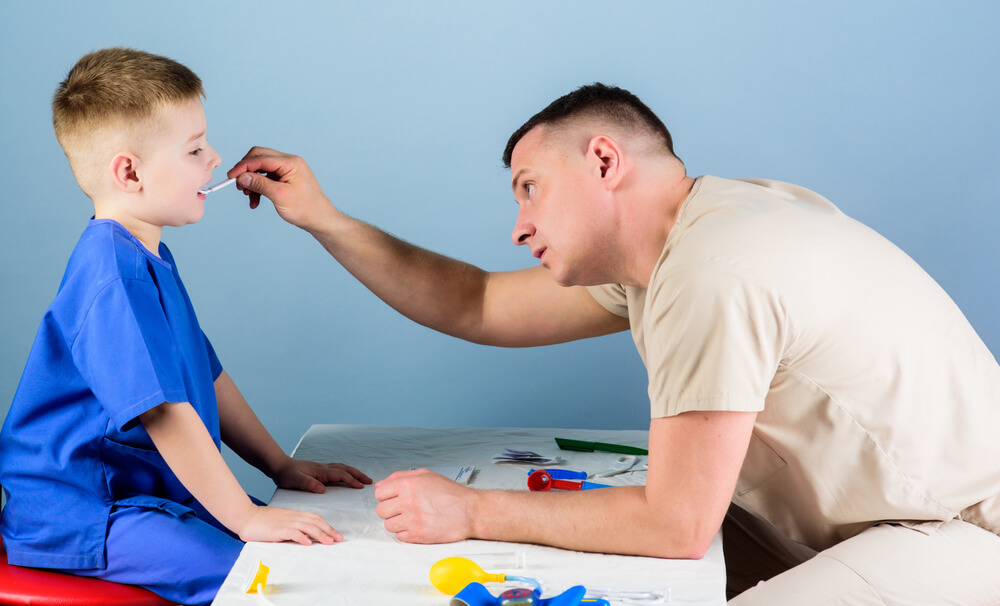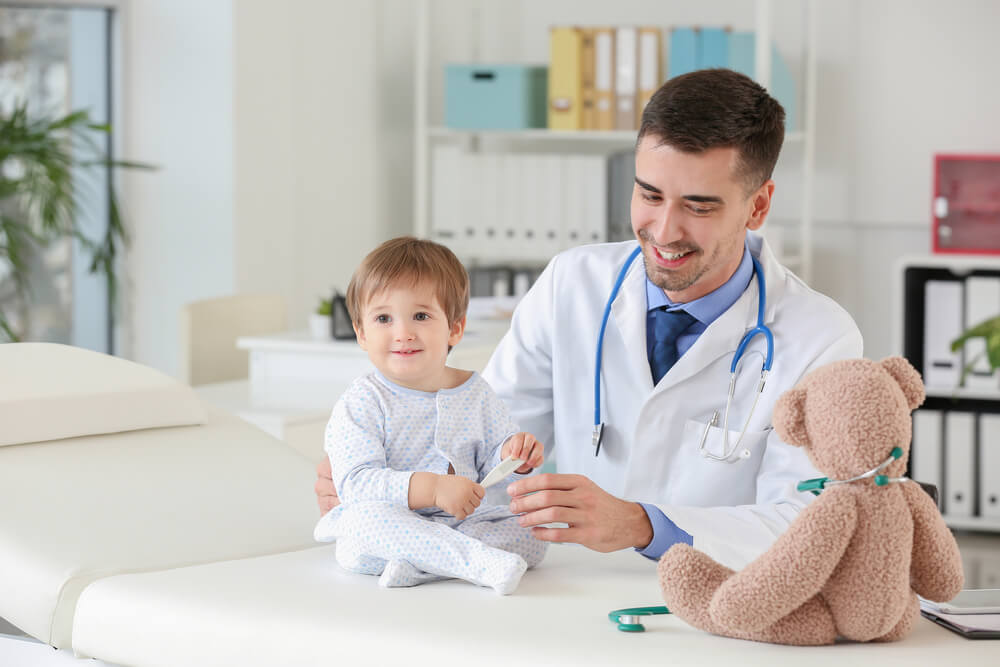When your children are sick, you look to your pediatrician to heal them. Pediatricians are very similar to the doctor you go to, but children’s growing bodies require different equipment at different stages in their development. What are the specialized tools and equipment that pediatricians use to diagnose and treat children? This article will discuss the various tools and equipment used by pediatricians to care for your child.
Pediatrician Tools
Pediatrician tools are used in the front office and the examination rooms. Everywhere pediatricians see your child, there are specialized tools to assist them with their job.
Tools Pediatricians Use in an Office Setting
Tools pediatricians use in their offices run the gamut from technology to specialized diagnostic equipment, from emergency diagnostics to toys that make children feel better. Here are some of the tools that we use in our office.
Child-Sized Equipment
Your child’s body goes through many stages of development between ages 0-21. Once children reach puberty, their bodies are large enough to use standard-sized medical equipment. But for babies and small children, specialized equipment must be used to perform routine care. For example, we weigh babies using special scales with curved sides so that the baby will not roll off the scale while being weighed.
Think about how tiny blood vessels are in a baby or toddler. Special pediatrician tools and equipment, like needles, must be used for injections and for suturing wounds. Likewise, the sutures themselves need to be smaller to reduce scarring.
Specialized stethoscopes and blood pressure cuffs are used with smaller patients. This is because the sounds produced by a child’s heart, lungs, and circulatory system are different from an adult’s.
Diagnostic Tools
In addition to the stethoscope and blood pressure cuffs mentioned earlier, there are child-focused diagnostic tools, including otoscopes (the device used to look in a child’s ears), tongue depressors, and reflex hammers. Ophthalmoscopes are used to see the structure and health of your child’s eyes. There are also child thermometers and infant scales used as part of diagnostic medicine.
In addition to physical equipment, there are several diagnostic tools that pediatricians use to gauge your child’s development. There are assessment tests for various mental health conditions like ASD (Autism Spectrum Disorder) and ADHD (Attention Deficit Hyperactivity Disorder). These are crucial in identifying special needs that your child has that may require accommodations for education.
Technology
Technology has come a long way in the last decade. Electronic Health Records (EHR) allow doctors and hospitals to safely and securely transfer reams of clinical data from one location to another without the cumbersome transport of physical records.
Gone are the days of toting about a stack of paper and X-rays every time you need to see a specialist. HIPAA (Healthcare Insurance Portability and Accountability Act) ensures that your EHR will be handled with the utmost care, so you and your child’s information is secure.
Some pediatricians use handheld devices to record patient data. Some of these devices can even be hooked up to more sophisticated diagnostic machines to capture test results efficiently and directly from the diagnostic machinery. These mobile devices and apps are also able to perform calculations on the data that they have collected. They help give the doctor a clear picture of the patient’s status, so they can focus on a solution.
Other “Equipment” Not Already Mentioned
To be a good pediatrician, some skills need to be developed with children in mind. While many of these “soft skills” are important in medicine in general, because children may be nonverbal or in their early development years, these tasks must be performed differently.
Communicating With a Child
Children express themselves very differently from adults. While an adult patient might say, “I am experiencing abdominal pain between my stomach and diaphragm,” a child would say, “My tummy hurts.” Diagnostically, there is a vast difference between those two statements.
Pediatricians must develop ways of communicating with young patients that include palpitation, gesturing, and listening to the different sounds your baby or young child makes while being examined. If the child is verbal, the pediatrician may ask simple, easy-to-understand questions. If their stomach hurts, they may ask if it’s grumbly or more of a sharp feeling. Using words young kids understand is important for pediatricians.
They’re not off the hook with teens either. Teens are often rebellious, sometimes even providing false information as some kind of “test” for your pediatrician. Having a great rapport with patients of all ages is an excellent skill for the pediatrician to have.
Allaying a Child’s Fears
Many children (and adults too) have multiple fears around seeing the doctor. Knowing how to reduce their anxiety is crucial for the patient/doctor relationship. You want your children to be open to seeing their pediatrician so that they will tell you when they don’t feel well, rather than withholding that information because they are afraid you will take them to see the
doctor. Oftentimes, pediatricians will give out some kind of treat after the visit, so that children aren’t anxious to visit.
Developing an Ongoing Patient Relationship

While it is great to have a long-term relationship with a physician as an adult, that is not always realistic. However, seeing the same pediatrician for your entire child’s life is important for the reasons just discussed above.
While general practitioners can glean most of everything that they need to know from a patient’s medical history, it does not give them a very good idea of who the patient is as a person. As adults, we can fill in the blanks. As children, it’s much more difficult. They may forget important events that would be a useful part of the diagnostic process or unable to communicate them clearly.
If you see the same pediatrician throughout your child’s life, he or she is aware of all the bumps and bruises, childhood illnesses, medications, inoculations, etc. Your pediatrician will also be more comfortable with how your children communicate and will have developed effective ways of communicating with them.
Your pediatrician is fully equipped to handle any routine exam or emergency situation for children all the way to age 21. That means that your teen can receive the same care that you would receive at your general practitioner, only with an eye on the fact that their bodies are still developing and maturing. It often means that pediatricians have two sets of equipment — one designed to be smaller or “child-sized” and another normal set of tools used for older patients.
I love children. It is why I became a pediatrician. I have practiced pediatric medicine in the Miami area since 1997. I see patients from newborns through age 21. At Dr. Ana Pediatric Care Specialist, I currently offer both telemedicine and in-office appointments. Call us today to schedule a well child visit or to take care of any ailments your child might be experiencing. I look forward to meeting you and your child.




